ABSTRAK
Implementasi algoritma neural network untuk visuo control motor pada robot lengan arm. Algoritma ini menggunakan teknik kuantisasi vector, neural-gas network, bersama dengan skema pembenaran error berdasarkan aturan pembelajaran tipe windrow-Hoff. Berdasarkan informasi yang disediakan oleh dua kamera, robot diajari/learning untuk memposisikan end-effector. Hanya dalam 1000 langkah latihan, robot-sistem kamera mampu untuk mengurangi kesalahan posisi pada end-effector. Dengan menggunakan adaptive feedback, robot mampu mengimbangi, tidak hanya penyimpangan kalibrasi, tapi juga segera merubah dalam hal geometri.
untuk setiap langkah latihan ke lokasi target dipresentasikan secara random memilih lokasi dalam bidang kerja robot. Dua kamera memonitor suasana dan preprosesing unit mengidentifikasi dua dimensi koordinat image dari lokasi target, hal tersebut berlaku untuk setiap kamera. Dua pasangan (U1,U2), (U3,U4) dari koordinat image dikombinasikan menjadi Utarget = ((U1, U2, U3, U4) T.
Untuk dapat memposisikan end-effectornya dengan benar, sistem robot harus tahu transformasi (Utarget) dari Utarget terhadap sudut joint .
Kata kunci: end effector, Neural Gas, pembelajaran
————————————————–
ABSTRACT
The implementation of neural network algorithm for visuo motor control of arm robot. This Algorithm uses a vector quantization technique, neural gas network, together with an error correction scheme based on a widrow-Hoff-type learning rule. Based on visual information provided by two cameras, the robot learns to position its end effector. By employing adaptive feedback the robot succeeds in compensating not only slow calibration drift, but also sudden changes in its geometry.
For each training step a target location is presented at a randomly chosen location within the workspace of the robot. Two cameras monitor the scene and a preprocessing unit identifies the two-dimensional image coordinates of the target location for each of the two cameras images. The two pairs (U1,U2), (U3,U4) of the image coordinates are combined into four-dimensional vector Utarget = ((U1, U2, U3, U4) T .
To be able to position its end effector correctly, the robot system has to know the transformation (Utarget) from Utarget to the corresponding set of joint angles
.
Key words: end effector, Neural Gas, Learning





